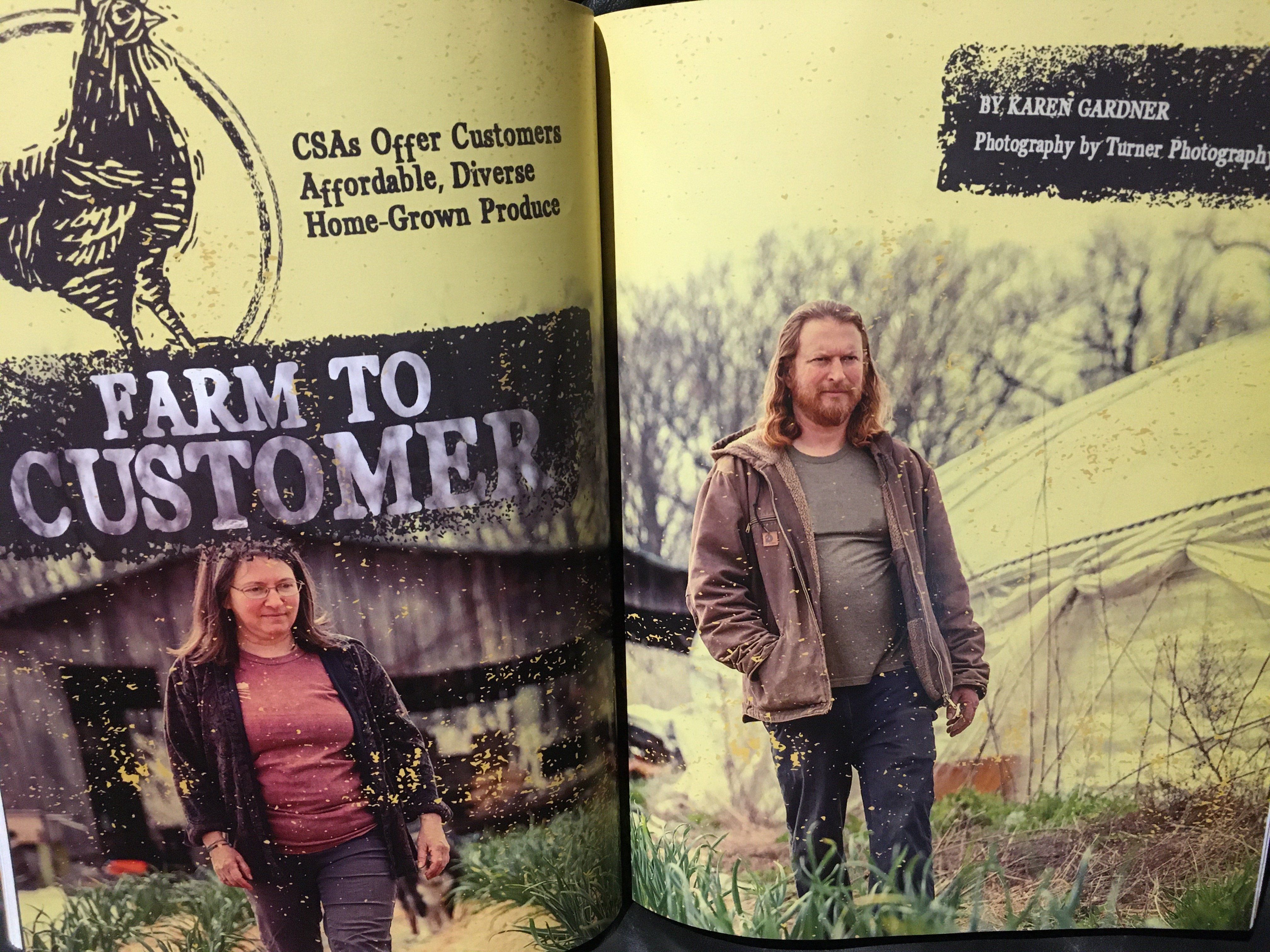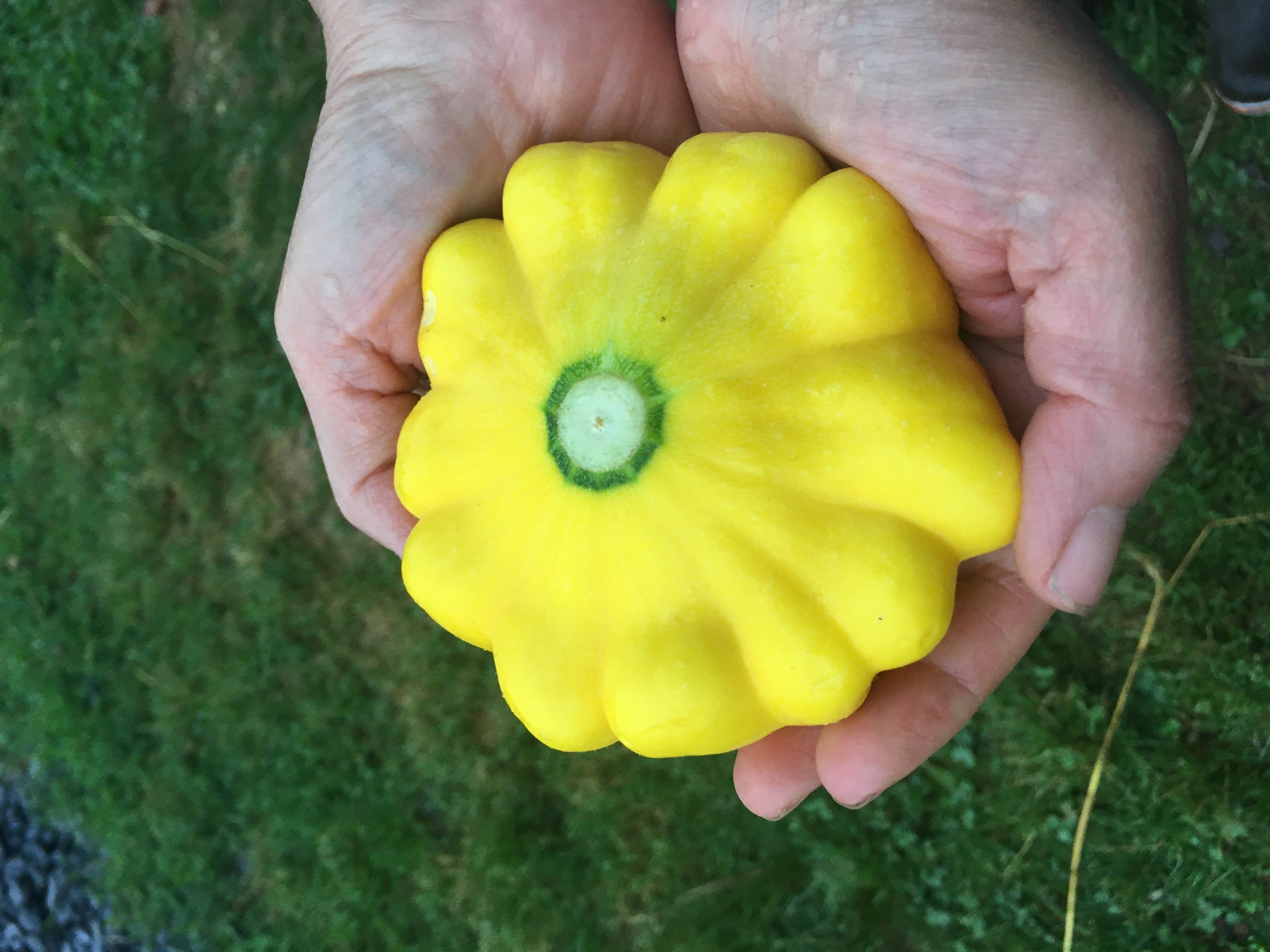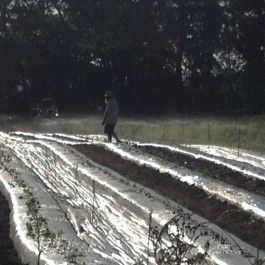Admin reminders:
- No need to sign up on a SignupGenius for a timeslot. Farm pickup times are Thursday or Friday 9am-7pm (if necessary Saturday).
- Please cross your name off when you find your list in the Veggie Shed. We make sure there are veggies waiting for you, and if you don't cross off your name, we save a harvest for you twice.
Planting sweet potato slips: Farm Hands opportunity
This week we will be planting sweet potatoes on the farm. Be sure to stop at the garden and see what we are up to. Just check it out and learn, or stay and help for a while. It’s accommodating to most ages, if you work together as a family. When you pick up sweet potatoes in September, you will know how they grew!
Sweet potatoes are planted from a sprout called a “slip”. The slip is grown from a planted sweet potato. These slips are planted in our rows. This technique is quite different from white potatoes, where we plant the potato itself.
FARM HANDS OPPORTUNITY: Help plant the sweet potatoes! This week we are planting the slips and adding a bit of straw to each hole for some crucial weed management. There is also black cloth to lay out between rows. Email or text Ilene (301-461-6575) to let me know if you plan to volunteer this week and approximately when. Or just check in when you arrive and see if it's a good time to help out.
Collard Ribbons
Collards are a tough green leaf that needs to be tenderized to soften the tough leaves. The classic Southern greens recipe, originally brought to Virginia by African slaves, cooks them down long and slow to soften the greens.
It is an important time to learn more about each other and celebrate culture. This article and recipe is celebrating and teaching about West African food heritage and includes a recipe for collards with West African twist. Friend and farm volunteer, Alex, who is from Ghana, is an amazing cook and did a farm cooking demo a couple years ago, introducing us all to African flavors (including lots of ginger and garlic!) that I just love. Try the collards recipe and add a new flavor to your palate!
As for collards, I really began to enjoy them after Denise did a food demo on the farm as well. Denise is from Brazil and is another friend and volunteer on the farm. She demonstrated how to cut the collard leaves into ribbons, which tenderizes the leaves enough that they can even be quickly sauteed. And I’m all about sauteing greens. Interestingly, the West African recipe above uses the ribbon technique in addition to a reasonably long simmer. But the ribbons are delicate enough for a quick sautee. This technique quickly tenderizes the leaves:
Cut the stem out of the leaf by cutting the leaf in half. Stack the two halves and roll them tightly into a cigar shape. Using a sharp knife, slice the cigar into thin slices. You will quickly have a bowl of ribbons! Heat a pan, heat oil. Add some chopped garlic scapes, sautee for a minute. Add collard ribbons, sautee for a minute or two, until they shrink. You may notice the color change to a brighter green. Add a splash of soy sauce at the end, or a splash of balsamic vinegar. Done!
Refrigeration Retrofit system
Phil is an innovative and creative farmer. Check out how he's chilling your veggies. Eight years ago, Aldi’s sold off chest freezers for $100 because they were unreliable for the store. All the local farmers bought them up. These are the units in our Veggie Shed. Phil retro’d them with a special thermostat that converts them into refrigerators by turning on and off automatically, so the temperature can be set at a higher refrigerating setting than a standard freezer setting. But these units were sold off cheap for a reason, and the units broke down one by one. We were told they would be too expensive to fix. We store things in broken units and kept most of them around. We started this year with four units still working, but we are now down to two and a half. What to do? These units would be $3000 each to replace.
Phil and his creative solutions to the rescue. He is currently setting up Retrofit #2 on these units. Our walk-in cooler is cooled by an air conditioner and a Cool-Bot thermostat. This is a popular way for crafty farmers to make an inexpensive walk-in cooler. Phil has set up a similar system to cool the refrigerator units with a window air conditioner. The refrigerators are next to each other, because they will be connected together by ducts to draw the cool air through each unit. This system will keep the Veggie Shed cooler and use much less electricity. It reuses broken freezer units. It cost under $1000 to build. We will monitor it to make sure it is cooling effectively. Two refrigerators are in operation this week. We expect to add 1-2 more to the system. So keep your eyes out for the labels--your produce will be in different refrigerators around the Veggie Shed, as we use different units to cool your produce during our setup period throughout the next few weeks.




